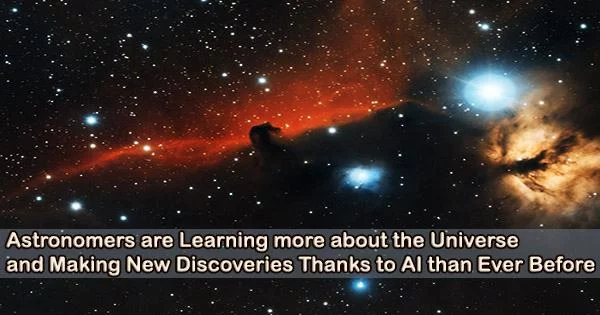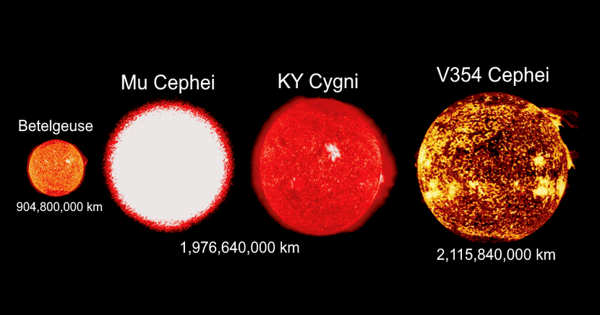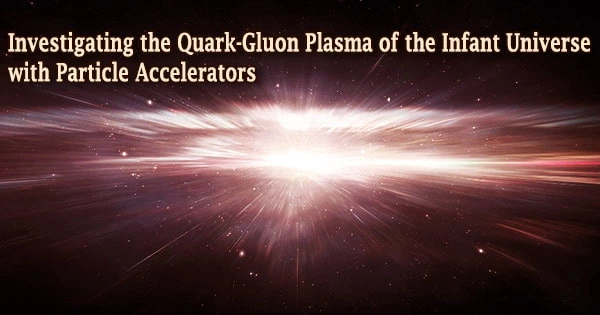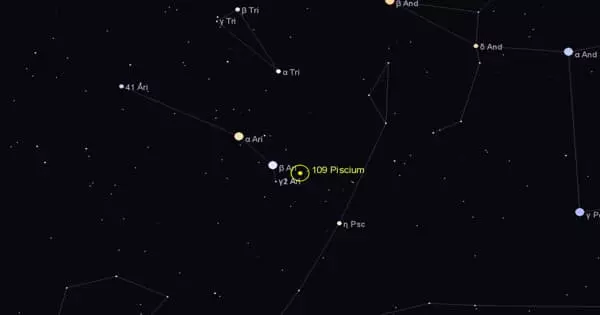The renowned black hole first image has recently improved by two times in sharpness. A research team has significantly improved upon their initial photograph from 2019, making the black hole at the heart of the M87 galaxy appear darker and larger than in the earlier version.
Astronomers have been using AI for decades. In fact, in 1990, astronomers from the University of Arizona, where I (Chris Impey) am a professor, were among the first to use a type of AI called a neural network to study the shapes of galaxies.
Since then, AI has spread into every field of astronomy. AI systems have started assisting astronomers in taming large data sets and learning new things about the universe as technology has grown more potent.
Better telescopes, more data
As long as astronomy has been a science, part of its purpose has been to attempt to make sense of the myriad celestial objects. When all that could be seen were a few thousand stars and a few planets, and the only instruments available were the human eye and a basic telescope, that task was pretty straightforward.
A hundred years ago, Edwin Hubble used newly built telescopes to show that the universe is filled with not just stars and clouds of gas, but countless galaxies. The sheer number of celestial objects that humans can view and the volume of data that astronomers must go through have both increased enormously as telescope technology has advanced.
For instance, the soon-to-be-finished Vera Rubin Observatory in Chile will produce images that are so enormous that 1,500 high-definition TV screens would be required to view each one completely. Over 10 years it is expected to generate 0.5 exabytes of data about 50,000 times the amount of information held in all of the books contained within the Library of Congress.
There are 20 telescopes with mirrors larger than 20 feet (6 meters) in diameter. Astronomers could never hope to process all of the data at their disposal without the aid of AI systems. There are a number of ways AI is proving useful in processing this data.
Picking out patterns
Astronomy often involves looking for needles in a haystack. Only 1% of the pixels in an astronomical photograph include the intricate forms of dim galaxies; the remaining 99% contain background radiation, light from other sources, or space’s utter darkness.
For identifying the patterns of galaxies, AI techniques, particularly neural networks with numerous interconnected nodes that can learn to recognize patterns, are ideal. Astronomers began using neural networks to classify galaxies in the early 2010s. Now the algorithms are so effective that they can classify galaxies with an accuracy of 98%.
This story has been repeated in other areas of astronomy. Radio telescopes are used by astronomers conducting SETI, or the Search for Extraterrestrial Intelligence, to listen for signals from extraterrestrial civilizations.
In the beginning, radio astronomers visually examined charts to search for anomalies that were puzzling. More recently, to search for fake radio signals, researchers used 1.8 million citizen scientists and 150,000 home computers.
AI is now being used by researchers to filter through volumes of data far faster and thoroughly than individuals can. This has considerably decreased the frequency of false positive signals while also enabling SETI efforts to cover more land.
Another example is the search for exoplanets. By observing a decrease in the amount of light emanating from a star when a planet passes in front of it, astronomers were able to identify the majority of the 5,300 known exoplanets. AI tools can now pick out the signs of an exoplanet with 96% accuracy.
Making new discoveries
When instructed to hunt for known objects by astronomers, like as galaxies or exoplanets, AI has proven to be exceptionally good at doing so. However, it is also quite effective at uncovering hypothetical objects or occurrences that have not yet been observed in the real world.
Teams to find new exoplanets, understand the ancestors of the stars that shaped and expanded the Milky Way, and forecast the signatures of novel gravitational wave kinds have used this method.
Astronomers utilize artificial intelligence (AI) to first translate theoretical models into observational signatures that include realistic degrees of noise. They then employ machine learning to improve AI’s capacity to recognize the anticipated phenomena.
Finally, in order to sort through signals that don’t match up with known occurrences, radio astronomers have also begun utilizing AI systems. A team from South Africa recently discovered an unusual item that might be a byproduct of the violent merger of two supermassive black holes. If this turns out to be the case, the data will enable a fresh examination of general relativity’s account of space-time.
Making predictions and plugging holes
As in many areas of life recently, generative AI and large language models like ChatGPT are also making waves in the astronomy world.
In order to make its new image, the team that captured the first black hole photograph in 2019 used generative AI. It did this by first giving simulations of several types of black holes to an AI in order to teach it how to identify black holes. The team then utilized the AI model it had created to close any gaps in the enormous quantity of information the radio telescopes had gathered about the black hole M87.
The team was able to produce a new image that is perfectly consistent with general relativity’s predictions and is two times sharper than the original using this simulated data.
Astronomers are also turning to AI to help tame the complexity of modern research. For the purpose of reading and organizing 15 million astronomy-related scientific papers, a team from the Harvard-Smithsonian Center for Astrophysics developed a language model called astroBERT. Even utilizing AI to select astronomical projects, a task that astronomers perform every ten years, is the idea put out by another team located at NASA.
As AI has progressed, it has become an essential tool for astronomers. Future discoveries about the universe are anticipated to heavily rely on this technology as telescopes get better, data sets get bigger, and AIs get better.
















